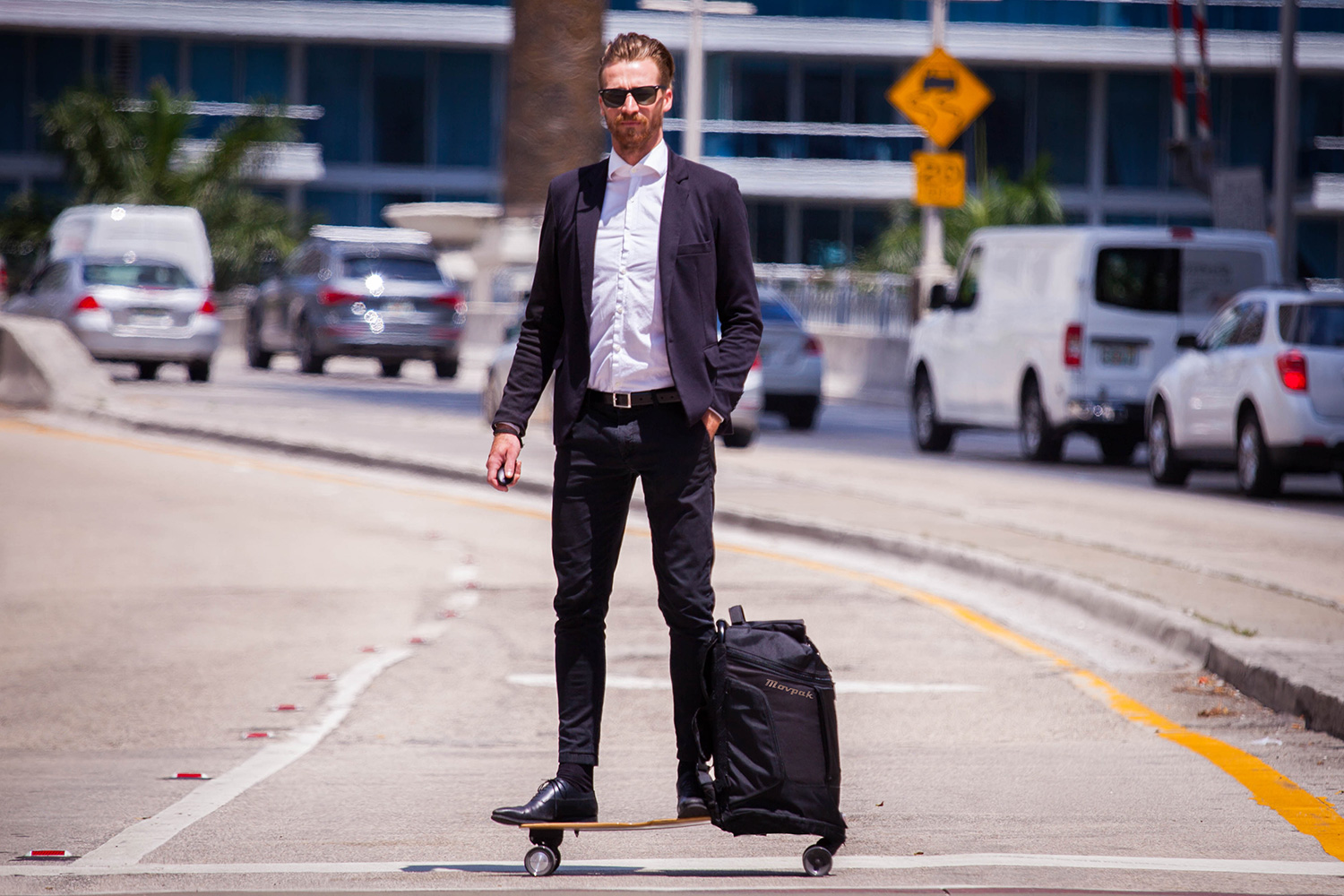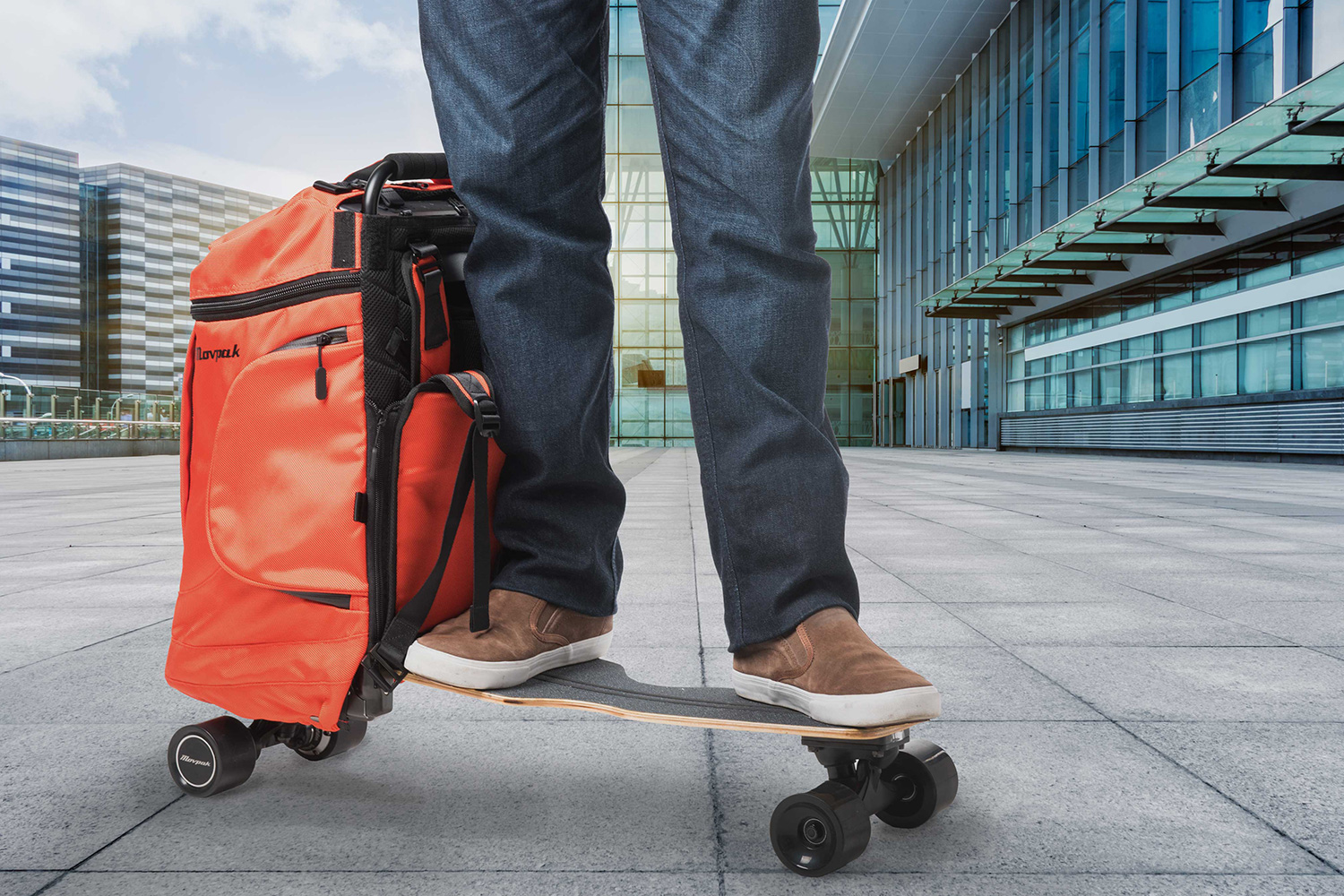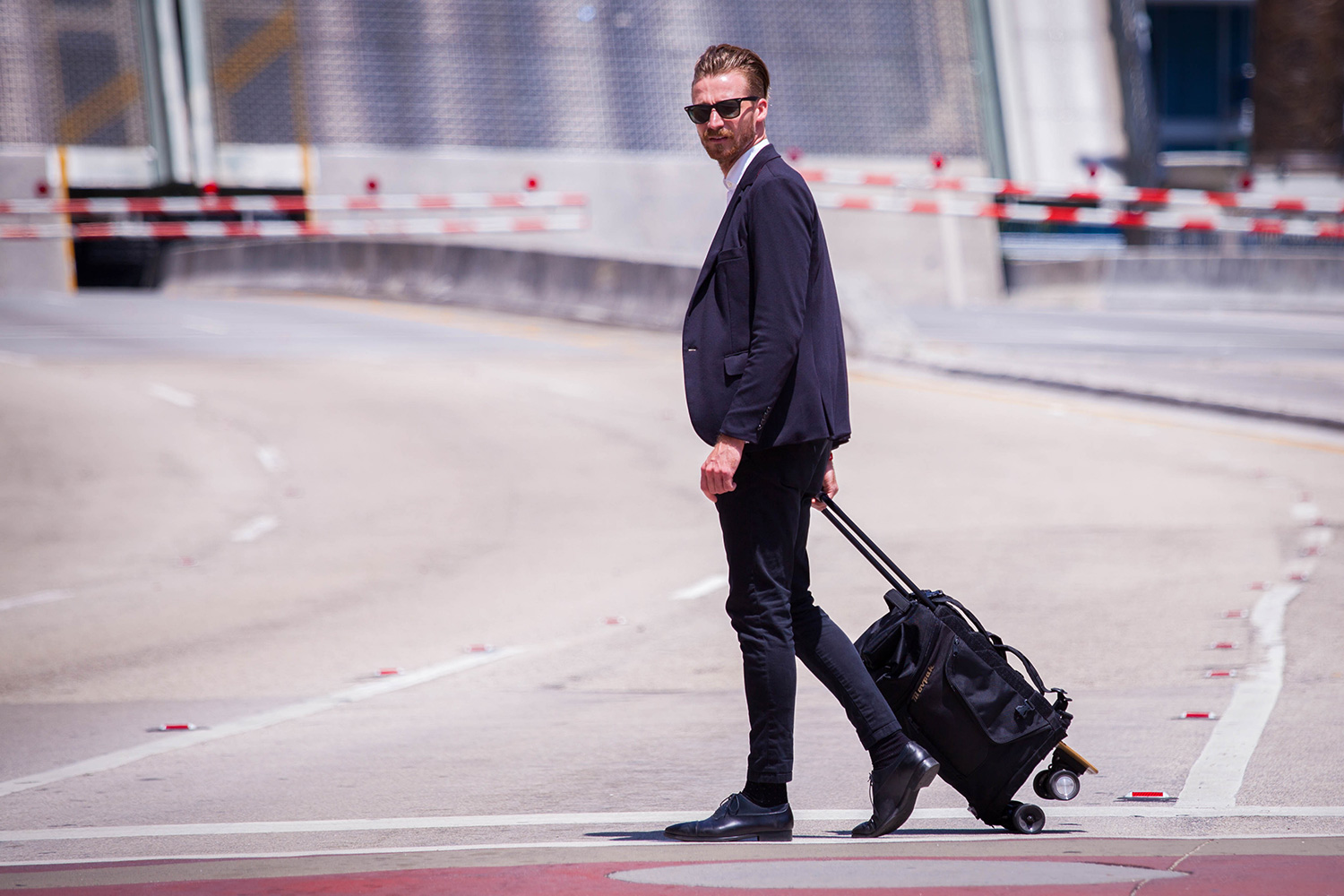Two years ago, the folks behind Movpak managed to raise over $250,000 to bring their electric skateboard and backpack combination to life. Now, the team is ready to ship a new-and-improved version of the electric skateboard that takes portability to a whole new level to eager backers around the world.
You see, once you’re finished riding the Movpak, you won’t need to pick it up and tuck it under your arm. Rather, you’ll be able to simply fold it up into a backpack and go about your merry way. So whether you want to consider it a backpack you can ride or a skateboard you can wear, it seems like the perfect tool for your urban commute.
The backpack-board hybrid is ready to ship, and available for pre-order on the crowdfunding site. Of course, we still urge you to exercise caution when it comes to backing crowdfunding projects, but it does seem as though the Movpak is ready to make good on its delivery pledges. The Movpak that will be shipping now boasts a larger bag capacity than promised in the original campaign — at 35 liters, you’ll basically be able to transport the whole contents of your office to and fro should you so choose. Be warned, however, the Movpak is pretty heavy already — after all, it contains an e-board — weighing in at 16 pounds. So despite the roominess of the bag, you’ll probably want to pack light.
Riding the Movpak is as easy as pulling a dedicated handle. From there, the board easily slides out, and using a companion remote, you’ll be able to control your speed and braking as you cruise down streets. In order to recharge the Movpak, just plug the charger into any standard outlet for a couple hours. The deck of the eboard is constructed with a combination of wood, metal, and Kevlar compounds, which promises to make the board simultaneously strong and flexible.
The Movpak is capable of traversing six miles on a single charge, at a top speed of 15 miles per hour, but thanks to new swappable batteries, you can double the range for longer commutes. There’s also an iOS and Android companion app that can help you track your Movpak in case it’s stolen. Built-in Bluetooth speakers will let you listen to your favorite playlist from any streaming service. so you can keep yourself entertained on your ride.
Promising to be airport friendly, the Movpak should fit into most overhead compartments on commercial flights, and also satisfies battery size limit restrictions. Thanks to its pull-out handle, you can easily roll the Movpak through an airport (or any other environment). We should point out, however, that while the Movpak is suitable for light rains or humid terrains, you shouldn’t ride it in heavy storms. The backpack itself is water repellent, so the contents of your Movpak should be quite safe.
The Movpak will set you back $899 on Indiegogo, and will begin shipping immediately. Once the campaign ends, the Movpak will retail for $1,190.
Editors' Recommendations
- Audi’s electric 2022 RS E-Tron GT is a concept that escaped the drawing board
- Lime hits 100M rides globally as e-scooter services continue to expand










